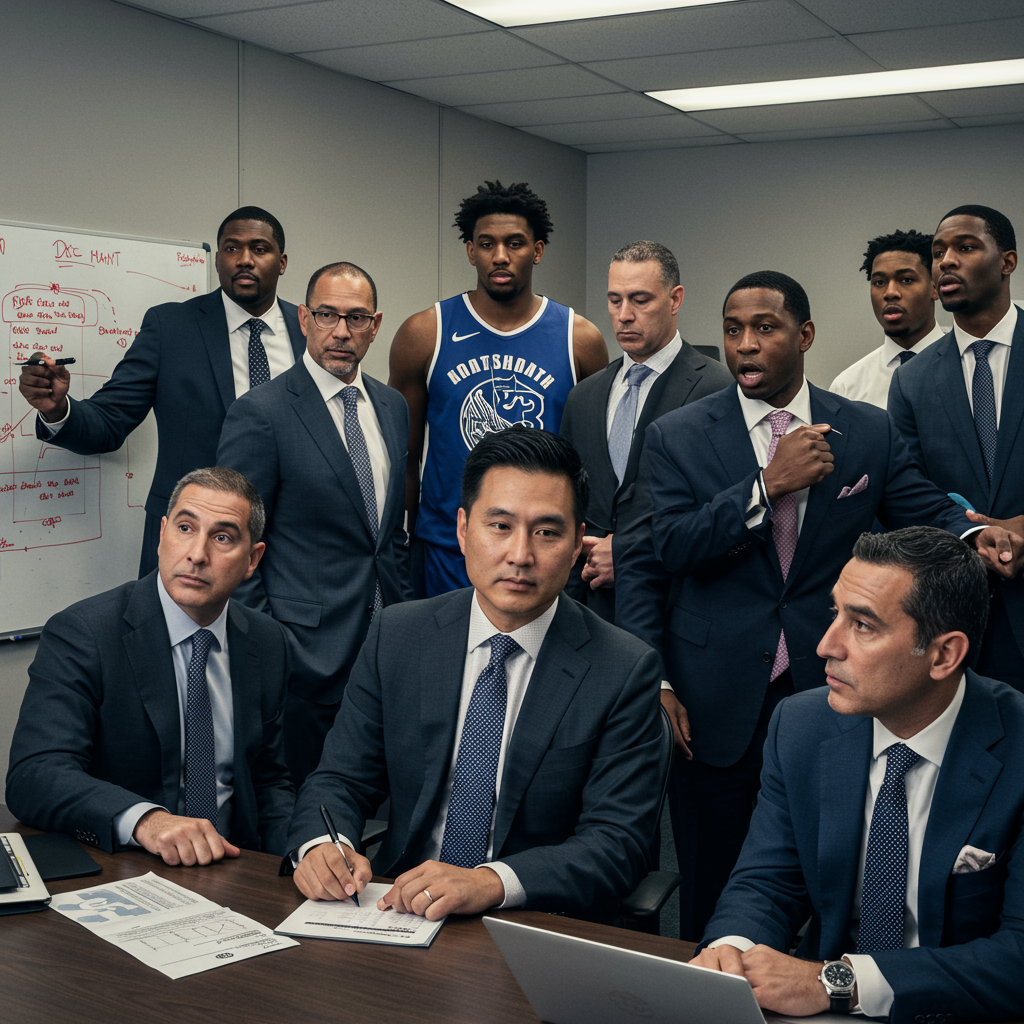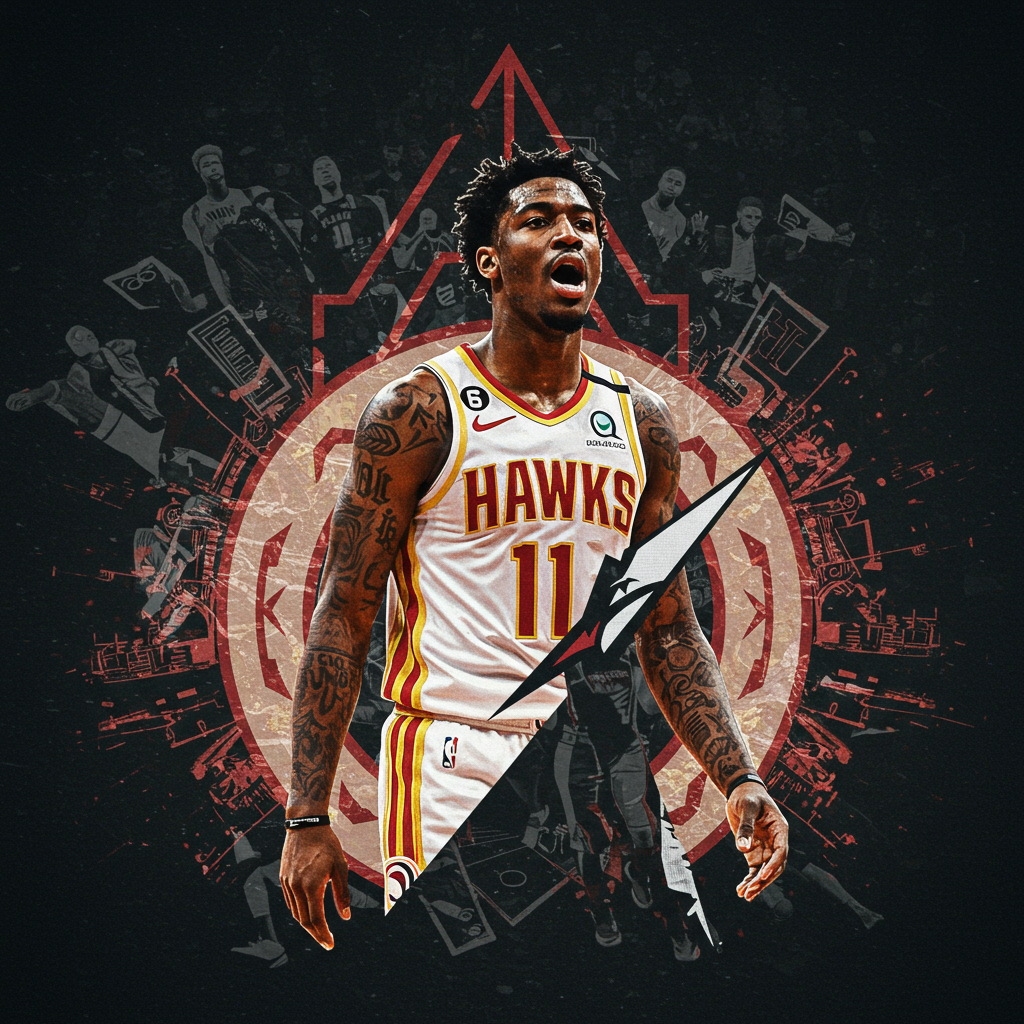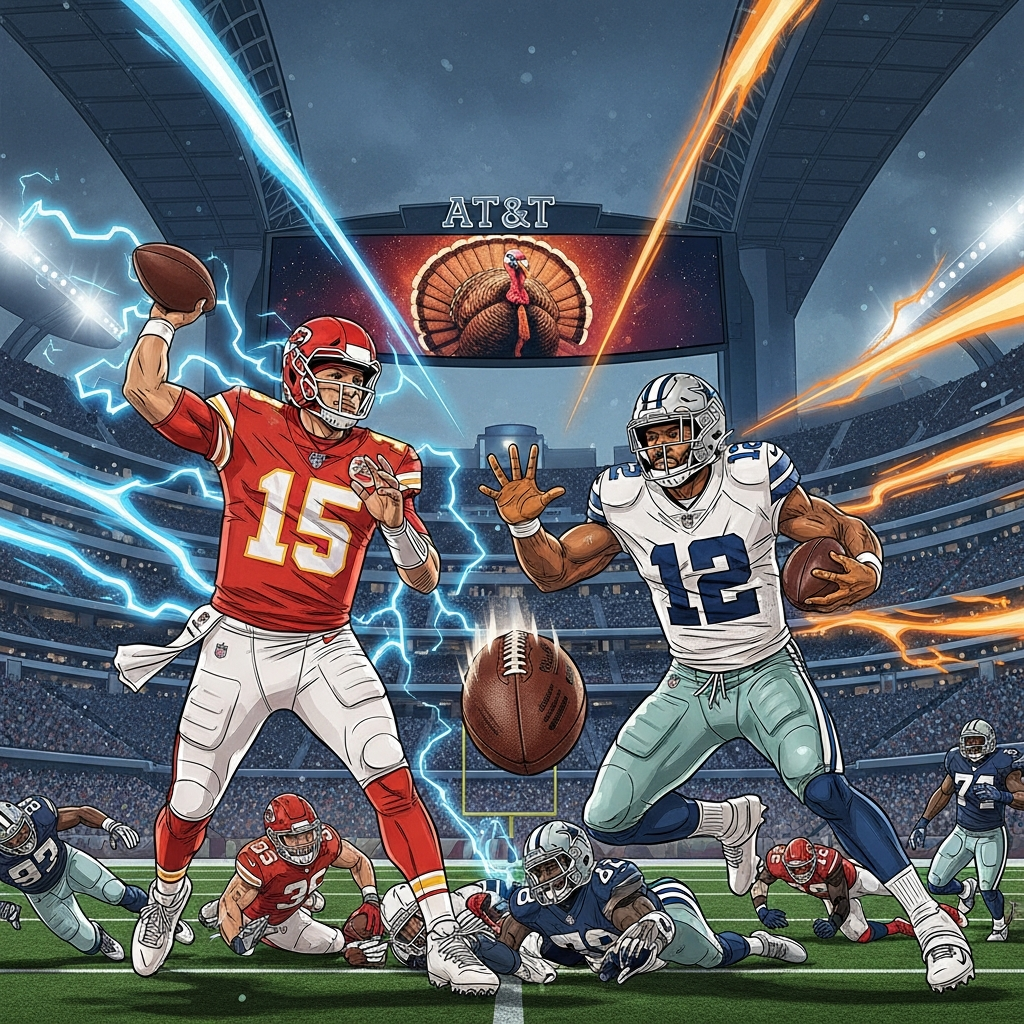NBA free agency was once a spectacle, a drawn-out summer drama where superstars held court, <a href="https://news.quantosei.com/2025/07/03/more-moves-sort-of/" title="NBA Free Agency: Shocking Moves & trade Buzz Explodes”>teams pitched lavish presentations, and front offices huddled for days in discrete locations. Remember the anticipation surrounding Kevin Durant or Gordon Hayward’s decisions? That feels like ancient history now.
Welcome to the modern era of NBA player movement – a lightning-fast game of strategic chess. Within just a few days of the official free agency period opening, the landscape has dramatically shifted, often not through traditional free agent signings, but complex trades and calculated roster maneuvers positioning teams for the real action later.
The Seismic Shift: Why Free Agency Looks Different
The traditional free agency frenzy, centered around bidding wars for top unrestricted free agents, is largely a thing of the past. Several factors, primarily tied to the collective bargaining agreement (CBA), explain this transformation. More generous contract extension terms incentivize star and near-star players to re-sign with their current teams before ever hitting the open market. This drastically shrinks the pool of elite talent available each summer.
Compounding this, few teams possess significant salary cap space. This year, the Brooklyn Nets were a rare exception with max-level room. Consequently, the highest-profile players changing teams via unrestricted free agency were figures like zero-time All-Star Myles Turner and Nickeil Alexander-Walker, who didn’t even start for his previous team. The market for high-end free agents has significantly diminished.
The February League: Trades Reign Supreme
Instead of July, the true hotbed for major talent acquisition has decisively moved to the NBA trade deadline in February. Over the last three years alone, names like Anthony Davis, Kevin Durant, James Harden, Kyrie Irving, Jimmy Butler, and Luka Dončić have all switched teams via midseason trades. Countless other high-level starters also changed jerseys closer to the deadline than the summer.
This marks a fundamental shift. Teams used to finalize their rosters in June and July, using the deadline only for minor tweaks. Now, it’s the primary mechanism for significant change and team building.
Summer Strategy: Prepping for the Deadline
The summer period hasn’t become irrelevant; its purpose has simply changed. Teams are now strategically using the initial days to position themselves for maximum flexibility at the February trade deadline. This involves adding middle-tier or short-term “balloon” contracts to create tradeable salary down the line. They meticulously line up future draft picks to satisfy trade rules like the Stepien rule. Managing the luxury tax aprons from day one is critical to avoid hard caps or restrictions that would compromise midseason trading ability. It’s clear: the league is now played on a February calendar.
Despite the absence of LeBron-style “Decisions,” the first few days of free agency still saw substantial activity, reshaping team fortunes. Let’s examine the teams that navigated this new landscape effectively, those that struggled, and those somewhere in between.
Decoding the Deals: Who Won the Initial Rush?
Several teams made moves positioning them for success, demonstrating shrewd management in this evolving environment.
Atlanta Hawks: Caw-caw! A Strategic Masterclass
Under new GM Onsi Saleh, the Hawks are widely lauded as major winners. Their excellent draft week, including acquiring Kristaps Porziņģis via trade and securing an unprotected 2026 first-round pick from New Orleans, set a strong foundation. They followed up with stellar free agency work.
Atlanta leveraged its $25 million Dejounte Murray trade exception to land Nickeil Alexander-Walker from Minnesota at a price just above the non-taxpayer midlevel exception, outmaneuvering competitors. Adding Luke Kennard on a one-year deal further fortified their roster. These additions significantly improve shooting, ballhandling, and defense, especially during non-Trae Young minutes, providing crucial depth. Atlanta also expects compensation for Clint Capela heading to Houston via sign-and-trade. The strategic genius lies in potentially keeping that massive trade exception alive for future use, although they must act fast before it expires and manage the tax apron carefully after using the MLE for Kennard. They also own future Bucks picks, adding intriguing long-term flexibility.
Charlotte Hornets: Buzzing with Smart Moves
Quietly, the Hornets had a very solid start to the offseason under Jeff Peterson’s front office. A standout move was turning Jusuf Nurkić into Collin Sexton and a second-round pick, addressing a critical need for shot creation beyond LaMelo Ball. Adding Spencer Dinwiddie on a minimum contract provides reliable backup point guard depth. Charlotte expertly extracted value by trading Mark Williams for assets including a likely late 2026 first-round pick, then magnified that value by converting salary-matching Vasilije Micić’s potential buyout into two second-round picks and Pat Connaughton (another potential buyout). While the Tre Mann contract raised some eyebrows, Charlotte has skillfully added depth and assets, though a starting center remains a question mark.
Oklahoma City Thunder: Champions of Continuity
Fresh off a dominant 68-win season and an NBA championship, the Thunder prioritized keeping their core intact. They successfully brought back 14 of their 15 players. Key moves included re-signing Jaylin Williams and Ajay Mitchell to team-friendly deals. The expected extension for MVP Shai Gilgeous-Alexander, reportedly worth around $285 million over four years, secures their superstar’s future. Extensions for Chet Holmgren and Jalen Williams are next on the horizon. Remarkably, OKC achieved this continuity while remaining $1.2 million below the luxury tax line. Few recent champions have been in such a strong position to repeat, although difficult financial decisions loom in 2026-27.
LA Clippers: Adding Splash Mountain Depth
The Clippers significantly upgraded their frontcourt depth by adding veteran Brook Lopez on a two-year, $18 million deal. This is seen as a steal for a player who provides both elite rim protection and high-volume three-point shooting. The backup center position behind Ivica Zubac instantly went from a major weakness to potentially one of the league’s best. The Clippers made this move while remaining under the tax line and retaining flexibility for a veteran minimum addition and potentially an extension for Norman Powell.
Decoding the Deals: Who Lost in the Scramble?
Not every team navigated the early free agency period without significant setbacks or questionable decisions.
Boston Celtics: The Tax Man Cometh
Having just won the 2024 NBA Finals, the Celtics immediately faced the harsh reality of the CBA’s repeater tax penalties, requiring them to shed roughly $20 million in salary by 2025-26. This forced a painful step back. Key players like Jrue Holiday, Kristaps Porziņģis, and Luke Kornet are gone, and Al Horford’s future is uncertain. While Boston gained value (two seconds for Holiday), the need to trim salary could necessitate trading more core players like Derrick White, Sam Hauser, or even Jaylen Brown. With Jayson Tatum rehabbing a torn Achilles, this shapes up as a “gap year,” making the scale of necessary cuts feel particularly detrimental despite being financially mandated. Rebuilding quickly for 2026-27 poses a significant challenge.
Indiana Pacers: Painted into a Tax Corner
The Pacers found themselves in a difficult financial bind partly due to extending Andrew Nembhard last summer, reportedly adding $56 million over two new years. This hefty raise, roughly double what Nickeil Alexander-Walker received as an unrestricted free agent, ballooned Nembhard’s salary and made it nearly impossible to pay Myles Turner a market-rate deal without exceeding the luxury tax threshold – something ownership has historically avoided. Turner’s departure is a loss. However, the Pacers have potential avenues for recovery, notably pursuing a sign-and-trade for Turner with Milwaukee to generate a $24.5 million trade exception, which might cost a second-round pick but offers future flexibility. Reacquiring their 2026 first-round pick also provides an important asset. While they have flexibility (MLE/BAE, room below tax) to find a stopgap center, it will likely be a step down, complicating their path back to playoff contention in 2026-27.
Decoding the Deals: Somewhere In Between
Some teams made moves that defy easy categorization, featuring both positives and significant questions or caveats.
Milwaukee Bucks: Desperation for Giannis?
The Bucks executed what could be described as the “best worst move” by waiving Damian Lillard and stretching his massive $112.6 million salary over five seasons ($54.1M in 2025-26, $58.4M in 2026-27) to clear space to sign Myles Turner to a four-year, $107 million deal. This maneuver also cost them two second-round picks and their non-taxpayer MLE. While they addressed the center need after losing Brook Lopez, replacing him with Turner came at the equivalent cost of a maximum contract (Lillard’s dead cap plus Turner’s salary). This costly gamble appears driven by a desire to keep Giannis Antetokounmpo happy, even if it further mortgages the team’s future (no first-round pick until 2031, limited young talent). While Giannis can carry them to the playoffs, the surrounding roster raises questions about genuine championship contention.
Los Angeles Lakers: Eyeing 2026 Flexiblity
The Lakers prioritized maintaining flexibility, reportedly targeting 2026 cap space – a strategy some experts argue is less effective for acquiring elite talent in the current CBA landscape. While questions remain about Luka Dončić’s expected extension and LeBron James’ long-term plans after picking up his player option, the Lakers did well with their non-taxpayer MLE, splitting it for Deandre Ayton and Jake LaRavia. This could potentially address their starting center need this year and starting small forward need next year. They have further flexibility with their BAE and expiring contracts but limited trade assets (only one first available until the 2026 draft). While the supporting cast around their stars still needs improvement, the additions represent an upgrade. Ayton, in particular, is seen as a strong pick-and-roll partner for Doncic.
Denver Nuggets: Tax Savings Over Asset Maximization?
The Nuggets added solid bench depth with Bruce Brown, Tim Hardaway Jr., and Jonas Valančiūnas, which are clear upgrades. However, a major critique revolves around trading Michael Porter Jr. to Brooklyn for Cam Johnson and an unprotected 2032 first-round pick. While providing salary relief ($17.3 million saved), this is viewed by critics as primarily a tax avoidance move that squandered an extremely valuable asset (a distant unprotected first-round pick) rather than using it to genuinely improve the team around MVP Nikola Jokić. This continues a trend of the Nuggets using draft picks for financial maneuvering. Despite this, Jokić’s brilliance keeps them a legitimate contender, highlighting the frustration of potentially missed opportunities to build an even stronger roster.
Frequently Asked Questions
Why did NBA free agency change so drastically recently?
NBA free agency has changed primarily due to the Collective Bargaining Agreement (CBA). More generous extension terms incentivize star players to re-sign with their current teams before hitting unrestricted free agency. Additionally, few teams have the significant salary cap space needed to pursue the top players who do become available. This has shifted the focus for major talent movement to the trade deadline in February.
Which teams are considered winners and losers after the first few days of 2025 NBA free agency?
Expert analysis suggests the Atlanta Hawks, Charlotte Hornets, Oklahoma City Thunder, and LA Clippers had strong starts, making strategic roster improvements or maintaining valuable continuity. Conversely, the Boston Celtics and Indiana Pacers faced significant challenges, largely due to luxury tax implications and roster constraints, forcing difficult steps backward despite their recent successes.
How do the new CBA rules and cap projections impact team strategies during the summer?
The new CBA rules, particularly regarding luxury tax aprons and penalties, force teams to be highly strategic from day one. Teams are now building rosters in the summer with an eye towards the February trade deadline, adding specific contract types to facilitate trades and managing their spending relative to tax thresholds to maintain midseason flexibility. Recent projections for slightly lower-than-expected cap growth also require teams to adjust their long-term financial planning.
Conclusion
The opening days of 2025 NBA free agency underscored the evolving nature of player movement in the league. While lacking the superstar unrestricted free agent sagas of the past, this period was marked by strategic trades, calculated signings focused on flexibility, and teams positioning themselves for future moves, particularly at the now paramount February trade deadline. Analyzing the early winners and losers reveals which front offices adapted best to this new “February league,” making moves that genuinely enhanced their competitive outlook or successfully navigated challenging financial landscapes. The focus has shifted from splashing big in July to meticulously crafting rosters for sustainable success and future flexibility.



